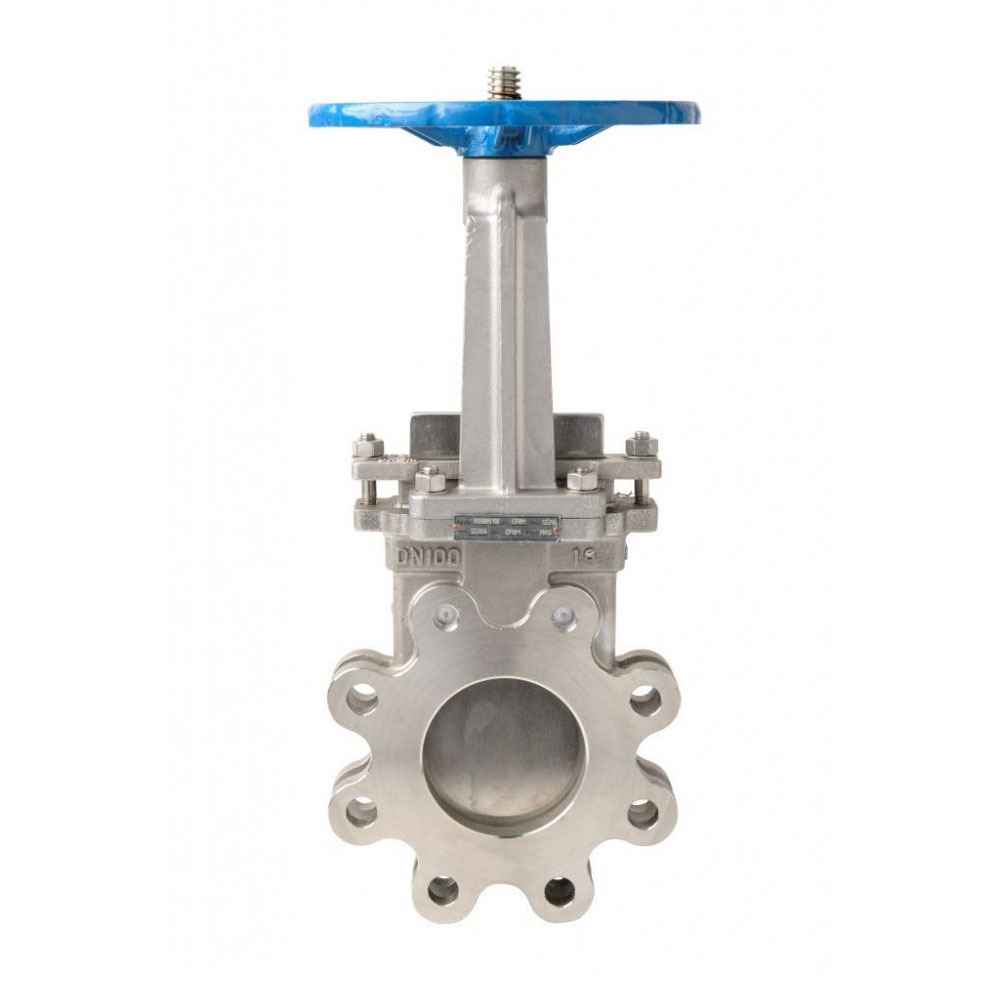A metal seated knife gate valve is a robust industrial valve designed to cut through thick or abrasive media such as slurry, pulp, powder, or wastewater. With metal-to-metal sealing surfaces, this valve type delivers superior durability, temperature resistance, and abrasion tolerance where soft-seated valves fall short.

🔧 What Is a Metal Seated Knife Gate Valve?
Unlike resilient or soft-seated knife gate valves that use rubber or elastomer seals, metal seated knife gate valves use hardened or alloyed metal seats to form a tight seal against the metal gate. This metal-to-metal interface offers better resistance to wear, erosion, and high temperatures, making it ideal for demanding process conditions.
🛠️ Key Features
Knife-shaped gate slices through solids and viscous fluids
Hardened metal seat (often stainless steel, Stellite, or other alloys)
Bi-directional or uni-directional sealing (depending on design)
Rugged body construction (cast or fabricated carbon steel, stainless steel, etc.)
Low maintenance, long service life
Suitable for both manual and actuated operation (pneumatic, electric, hydraulic)
📌 Typical Applications
Metal seated knife gate valves are frequently used in harsh or abrasive media where rubber or soft seats would degrade quickly:
Mining and mineral processing (slurry, tailings)
Pulp and paper (pulp stock, wood chips)
Steel and foundries (ash handling, scale)
Power plants (bottom ash, fly ash)
Chemical processing
Wastewater treatment (raw sewage, sludge)
Bulk handling systems (powders, granules)
🧱 Common Materials of Construction
| Component | Typical Materials |
|---|---|
| Body | Cast iron, carbon steel, 304/316 stainless steel |
| Gate | Stainless steel, hard-coated carbon steel, duplex |
| Seat | Metal alloys (Stellite, 17-4PH, hard-faced SS) |
| Packing | Graphite, PTFE, braided fiber |
| Stem | SS or high-strength alloy |
✅ Advantages of Metal Seated Knife Gate Valves
Abrasion-resistant: Performs well in slurry and solids-laden flow
High-temperature capable: Ideal for steam, ash, and thermal media
Extended valve life: Reduced wear over time compared to soft seats
Zero elastomer degradation: No concern about swelling, hardening, or tearing
Lower total cost of ownership in abrasive systems
⚠️ Limitations
Metal-to-metal seal may not achieve bubble-tight shutoff (class IV–V leakage)
Higher actuation force required vs. soft-seated valves
Not ideal for low-pressure gas sealing applications
More expensive upfront than soft-seated equivalents
🔍 Soft-Seated vs. Metal-Seated Knife Gate Valves
| Feature | Soft-Seated Knife Gate Valve | Metal-Seated Knife Gate Valve |
|---|---|---|
| Sealing Type | Elastomer or rubber seat | Metal-to-metal |
| Shutoff Capability | Bubble-tight (Class VI) | Class IV–V (typical) |
| Abrasive Media | Poor resistance | Excellent resistance |
| Temperature Handling | Limited (~200°C max) | High (~600°C or more) |
| Application Suitability | Clean water, air, light slurry | Slurry, ash, pulp, bulk solids |
🧰 Options & Configurations
Lug-type or wafer-type body design
Rising or non-rising stem
Pneumatic, electric, or hydraulic actuator
Purge ports and gate scrapers
Hard-faced gate and seat options
Bi-directional sealing knife gates available
🧪 Standards and Ratings
Pressure ratings: Typically 150 PSI (ANSI 150), with higher ratings available
Temperature range: Up to 600°C (1112°F) depending on material
Face-to-face: MSS-SP-81 or manufacturer standard
End connections: Flanged, lugged, wafer
🔚 Conclusion
For industries dealing with abrasive, high-temperature, or solids-laden media, the metal seated knife gate valve offers unmatched reliability, longevity, and performance. Whether you’re processing mining slurry, chemical pulp, or incinerator ash, this valve stands up to the toughest flow control challenges.
Looking for a heavy-duty valve solution? A metal seated knife gate valve may be exactly what your process needs.
